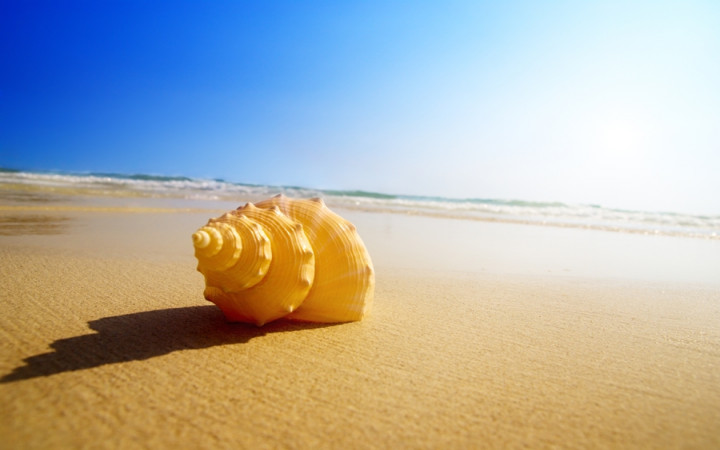Do you enjoy spending time at the beach? Who doesn't, right? The sun, the sand, the water…what's not to like? We bet you love to make sand castles, too.
The only bad thing about making sand castles is that they often don't last very long. When the tide comes in, ocean waves can sweep over them, reducing them to rubble in seconds.
If you've played near sand and water very often, you know that water runs right through sand. If you wanted to invent a new bucket to carry water around, sand would certainly not be a good building material to use.
If you've ever waded out into the ocean, you know that soft sand provides a nice walking surface. But if the bottom of the ocean is sand, why doesn't all the water in the ocean simply drain out of it? That's the question asked by one of our Wonder Friends that we'll explore today.
The simple answer is that not all of the ocean floor is made of sand. The ocean floor consists of many materials, and it varies by location and depth. In shallow areas along coastlines, you'll mainly find sand on the ocean floor. As you venture deeper, though, you'll encounter other thicker soils and sediments.
In the deepest parts of the ocean, you'll find layers of Earth's crust make up the ocean floor. These deepest layers are made up of rock and minerals. Unlike the soft sands along the shoreline, these deep layers of thick rock and minerals do a fine job of holding the water in the world's oceans.
And it's a good thing, too! The oceans are more important to a healthy life on Earth than most people realize. Some scientists would call them the lifeblood of Earth. Over 70 percent of Earth's surface is covered by oceans. They affect weather, regulate the planet's temperature, and play a critical role in the water cycle. Despite their importance, the world's oceans remain largely unexplored. Some scientists estimate that as few as five percent of the world's oceans have been explored!
How much is there to explore? A lot! Scientists estimate the world's water supply at approximately 332,500,000 cubic miles of water. That's a lot of water! Of that total supply, scientists believe that about 321,000,000 cubic miles (or about 96.5%) of that water supply are stored in the world's oceans.
The oceans play an important role in Earth's water cycle. They provide about 90 percent of the evaporated water that goes into the water cycle. That evaporated water eventually condenses in the atmosphere and falls back down as some form of precipitation, such as rain or snow.
Of course, a lot of that precipitation falls directly back into the ocean. The parts that fall on land make their way through the soils into streams and rivers that eventually travel back to the oceans, too. The water cycle thus helps to keep the oceans full.
Over the short term, ocean levels remain fairly constant. Over the course of thousands of years, though, ocean levels can change dramatically. During the last Ice Age, ocean levels were much lower than they are currently. Scientists worry that increasing temperatures around the globe will continue into the future. If they do, some of the polar ice caps may melt, leading to higher ocean levels around the globe in the future.
Regardless of how ocean levels change in the future, one thing is certain. The world's oceans aren't going to drain through the sand, and they're not going to run dry anytime soon!




